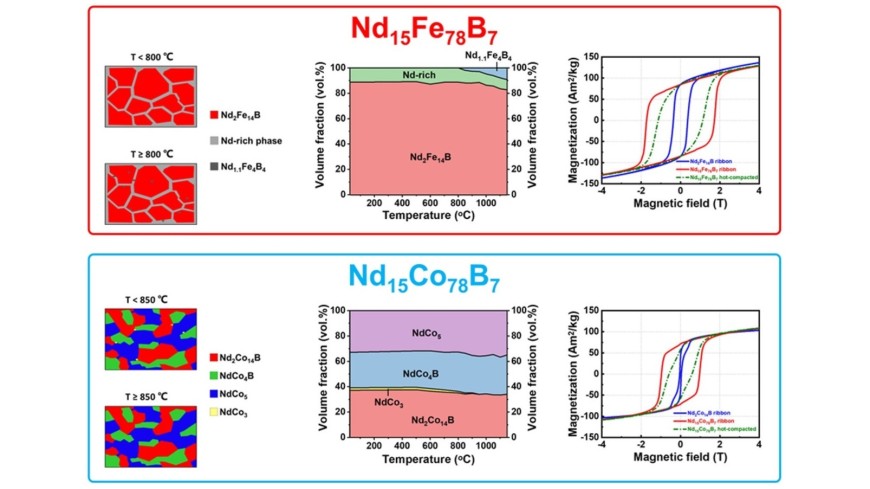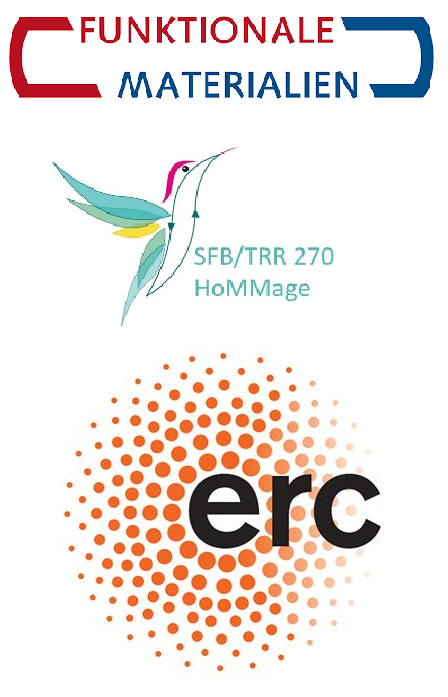A comparative study of Nd15Fe78B7 and Nd15Co78B7 systems: phase formations and coercivity mechanisms
New publication
2022/09/12

Y. Wu, K. P. Skokov, L. Schäfer, F. Maccari, A. Aubert, Z. Rao, K. Schweinar, B. Gault, H. Xu, C. Jiang, O. Gutfleisch
Acta Materialia, 240, 118311, (2022).
Nd-Fe-B and Nd-Co-B nanocrystalline magnets exhibit coercivity above 1 T. The microstructure and coercive mechanism of Nd-Fe-B magnets are well understood, which does not apply to the Nd-Co—B counterpart. Nd15Fe78B7 and Nd15Co78B7 alloys with simple and stable stoichiometries were studied to reveal the similarities and differences between these two systems. Melt-spun nanocrystalline ribbons, hot-compacted magnets and bulk materials crystallized from the amorphous precursor were used. The coercivity of Nd15Fe18B7 alloy is in the range of 0.9–1.7 T, while for Nd15Co18B7 it was of 0.5–1.0 T. Electron microscopy and atom probe tomography analyses indicate that, in contrast to conventional Nd15Fe78B7, where the ferromagnetic Nd2Fe14B phase is the dominant matrix phase and the Nd-rich phase distributes along the grain boundaries providing magnetic decoupling, the Nd15Co18B7 alloys comprise of three randomly redistributed exchange-coupled ferromagnetic phases: Nd2Co14B, NdCo5 and NdCo4B. Using single crystals of all constituent phases, their spontaneous magnetization Ms and anisotropy constant K1 were determined. Based on these intrinsic parameters and nanostructure, micromagnetic simulations could reveal the differences in the respective coercivity mechanisms. This work is part of the CRC/TRR 270 and a cooperation with MPIE Düsseldorf and Beihang University, Beijing.



